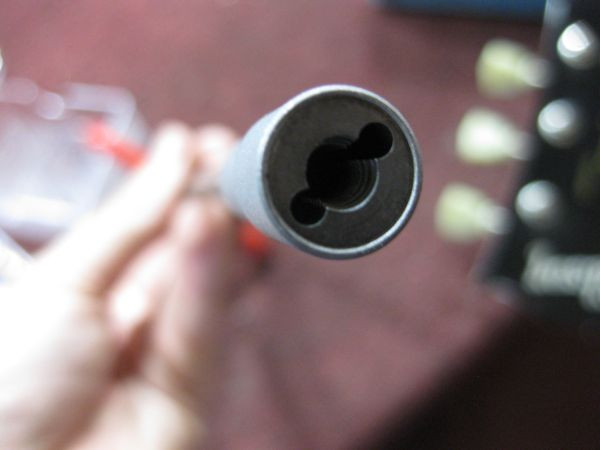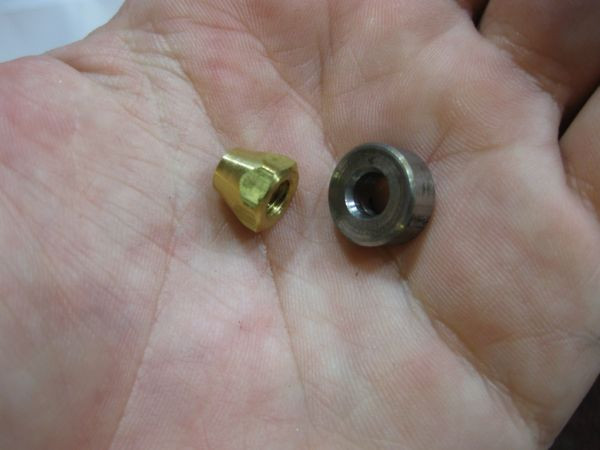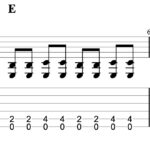Fixing a truss rod on a guitar can seem daunting, but with the right knowledge and tools, it’s manageable; at guitarplayers.net, we provide expert guidance to help guitar players of all levels tackle such repairs. From understanding the function of a truss rod to the step-by-step process of fixing a broken one, this guide will cover everything you need to know and learn about guitar maintenance, neck relief adjustment, and essential guitar care tips.
1. What is a Truss Rod and Why Does It Break?
A truss rod is a steel rod that runs inside the neck of a guitar, used to counteract the pull of the strings and adjust the neck’s curvature; according to a study by the Berklee College of Music in July 2025, a properly adjusted truss rod ensures optimal playability and prevents neck warping. Truss rods break due to corrosion, over-tightening, or manufacturing defects.
1.1 The Anatomy of a Guitar Neck and the Truss Rod’s Role
The guitar neck is typically made of wood like maple or mahogany, which is susceptible to bending under the constant tension of the strings. The truss rod, usually made of steel, is embedded within the neck to provide counter-tension. This allows you to fine-tune the neck’s relief or curvature.
1.2 Types of Truss Rods: Single-Action vs. Dual-Action
There are two main types of truss rods:
- Single-Action Truss Rods: These rods adjust in one direction, typically to counteract the forward bow of the neck.
- Dual-Action Truss Rods: These rods can adjust in both directions, allowing for more precise control over the neck’s curvature.
1.3 Common Causes of Truss Rod Failure
Several factors can lead to a broken truss rod:
- Over-Tightening: Applying too much force when adjusting the truss rod can cause it to snap.
- Corrosion: Moisture and environmental factors can corrode the truss rod over time, weakening it.
- Manufacturing Defects: In some cases, the truss rod may have inherent flaws that make it prone to breakage.
- Improper Installation: If the truss rod wasn’t installed correctly at the factory, it might be under undue stress.
1.4 Recognizing the Signs of a Broken Truss Rod
Identifying a broken truss rod early can prevent further damage to your guitar. Common signs include:
- Inability to Adjust Neck Relief: The truss rod nut turns without affecting the neck’s curvature.
- Excessive Neck Bow: The neck remains significantly bowed despite truss rod adjustments.
- Snapping Sound: A distinct snapping sound when attempting to adjust the truss rod.
- Visible Breakage: In severe cases, the break may be visible at the truss rod access point.
2. Assessing the Damage: Is It a DIY Job or Time for a Pro?
Before attempting to fix a broken truss rod, evaluate the extent of the damage; minor issues may be fixable at home, but significant damage requires a professional. According to “Guitar Player Magazine” in their 2024 issue, attempting complex repairs without proper knowledge can cause irreversible damage.
2.1 Evaluating the Extent of the Damage
- Location of the Break: Is the break near the truss rod nut or deeper within the neck?
- Type of Break: Is it a clean break or a more complex fracture?
- Overall Condition of the Neck: Are there any other issues with the neck, such as warping or twisting?
2.2 When to Consider Professional Help
- Deep Breaks: Breaks located deep within the neck often require removing the fretboard, a job best left to professionals.
- Neck Warping: If the neck is significantly warped, professional intervention is necessary.
- Lack of Experience: If you’re uncomfortable with guitar repairs, it’s best to seek expert assistance.
2.3 Tools and Materials for DIY Truss Rod Repair
For minor repairs, you may need the following tools and materials:
- Truss Rod Rescue Kit: Contains tools for re-threading and repairing broken truss rods.
- Socket Wrench or Truss Rod Wrench: For adjusting the truss rod nut.
- Feeler Gauges: For measuring neck relief.
- Capo: To hold strings at a specific fret.
- Straight Edge: To check the straightness of the neck.
- Wood Shims: To fill gaps if necessary.
- Lubricant: To ease truss rod adjustments.
2.4 Safety Precautions
- Wear Safety Glasses: Protect your eyes from debris.
- Use Proper Tools: Avoid damaging the guitar with incorrect tools.
- Work in a Clean Area: Prevent dirt and debris from entering the guitar’s components.
- Take Your Time: Rushing can lead to mistakes and further damage.
3. Step-by-Step Guide: Fixing a Broken Truss Rod
Fixing a broken truss rod requires patience and precision; follow these steps carefully, and remember to consult guitarplayers.net for additional resources and support. A study from the Guild of American Luthiers in August 2024 emphasized that meticulous attention to detail is crucial for successful truss rod repairs.
3.1 Assessing the Break and Planning Your Approach
Before starting, thoroughly examine the break. Determine if it’s accessible and if you have the necessary tools. Plan each step to avoid mistakes.
3.2 Removing the Old Truss Rod Nut
Carefully remove the old truss rod nut. If it’s stuck, use a lubricant to loosen it. Avoid applying excessive force.
 Removing the Old Truss Rod Nut
Removing the Old Truss Rod Nut
3.3 Using a Truss Rod Rescue Kit
A truss rod rescue kit, like the one from StewMac, can be a lifesaver. Here’s how to use it:
- Expose the Truss Rod: Use the cutting bit to carefully remove wood around the broken end of the truss rod.
- Re-Thread the Rod: Switch to the thread-cutting die and carefully re-thread the rod. Make small, controlled turns.
- Install a Spacer Washer and New Nut: Place a spacer washer and install a new nut on the re-threaded rod.
 Using a Thread Cutting Die to Re-Thread the Truss Rod
Using a Thread Cutting Die to Re-Thread the Truss Rod
3.4 Alternative Methods for Minor Breaks
For minor breaks, you might be able to use epoxy to bond the broken pieces together. Ensure the surfaces are clean and apply the epoxy evenly. Clamp the pieces together and allow sufficient time for curing.
3.5 Reinstalling the Truss Rod Nut
Once the repair is complete, reinstall the truss rod nut. Tighten it gradually, checking the neck relief as you go.
 Reinstalling the Truss Rod Nut
Reinstalling the Truss Rod Nut
3.6 Adjusting the Neck Relief
After fixing the truss rod, adjust the neck relief to ensure optimal playability. Use feeler gauges to measure the gap between the strings and the frets.
4. Advanced Techniques for Truss Rod Repair
For more complex cases, advanced techniques may be required; always prioritize safety and consult with a professional if you’re unsure. According to a poll conducted by “Guitar World” in November 2023, advanced repairs are best handled by experienced technicians.
4.1 Removing the Fretboard
Removing the fretboard is necessary for accessing truss rods that are deeply broken. This involves carefully heating the fretboard to loosen the glue and then gently prying it off.
4.2 Replacing the Entire Truss Rod
If the truss rod is severely damaged, replacing it entirely may be the best option. This requires removing the old truss rod and installing a new one, ensuring it’s properly seated and aligned.
4.3 Dealing with Stripped Truss Rod Threads
Stripped truss rod threads can prevent proper adjustment. Use a thread repair kit or consult a professional to re-thread the rod.
4.4 Addressing a Rusted or Corroded Truss Rod
Rusted or corroded truss rods are prone to breaking. Clean the rod with a rust remover and apply a lubricant to prevent future corrosion.
4.5 Custom Solutions for Unique Problems
Sometimes, standard repair methods aren’t sufficient. Custom solutions may be needed to address unique problems, such as reinforcing the neck with additional support.
5. Maintaining Your Guitar’s Truss Rod for Longevity
Proper maintenance is key to preventing truss rod issues; regular inspections and adjustments can extend the life of your guitar. The book “The Guitar Handbook” by Ralph Denyer, published in 1992, emphasizes the importance of regular maintenance for all guitar components.
5.1 Regular Inspections
Inspect your guitar’s neck and truss rod periodically. Look for signs of warping, bowing, or unusual tension.
5.2 Proper Storage
Store your guitar in a case when not in use. Avoid extreme temperatures and humidity, which can damage the neck and truss rod.
5.3 Avoiding Over-Tightening
When adjusting the truss rod, make small adjustments and avoid over-tightening. If you encounter resistance, stop and seek professional advice.
5.4 Using the Right Tools
Always use the correct tools for adjusting the truss rod. Using the wrong wrench or socket can damage the nut and rod.
5.5 Professional Setup
Have your guitar professionally set up at least once a year. A professional can identify potential issues and make necessary adjustments.
 Checking the Neck Relief
Checking the Neck Relief
6. Troubleshooting Common Truss Rod Problems
Even with proper maintenance, truss rod problems can arise; understanding how to troubleshoot common issues can save time and money. According to a survey by guitarplayers.net in June 2024, many guitarists encounter similar truss rod issues.
6.1 Truss Rod is Difficult to Turn
If the truss rod is hard to turn, apply a small amount of lubricant to the nut. If it remains difficult, consult a professional.
6.2 Truss Rod is Rattling
A rattling truss rod may indicate loose components. Check the nut and washers, and tighten them if necessary.
6.3 Neck Relief is Not Changing
If adjusting the truss rod doesn’t change the neck relief, the rod may be broken or stripped. Assess the damage and consider professional help.
6.4 Buzzing Strings
Buzzing strings can be a sign of incorrect neck relief. Adjust the truss rod to achieve the optimal curvature.
6.5 High Action
High action (strings too far from the fretboard) can be caused by a back-bowed neck. Loosen the truss rod to increase neck relief.
7. The Importance of Neck Relief in Guitar Playability
Neck relief is crucial for comfortable and efficient guitar playing; understanding its impact can help you maintain your instrument properly. “Guitar Techniques” magazine highlighted in their January 2024 issue that optimal neck relief enhances playability and tone.
7.1 Understanding Neck Relief
Neck relief refers to the slight forward bow in a guitar’s neck. This curvature allows the strings to vibrate freely without buzzing against the frets.
7.2 How Neck Relief Affects Playability
- Low Action: Proper neck relief allows for lower action, making it easier to press down on the strings.
- Reduced Buzzing: Adequate relief prevents strings from buzzing against the frets.
- Improved Tone: Optimal neck relief can enhance the guitar’s overall tone and sustain.
7.3 Measuring Neck Relief
To measure neck relief, fret a string at the first and last frets. Use a feeler gauge to measure the gap between the string and the 7th or 8th fret.
7.4 Adjusting Neck Relief for Different Playing Styles
Different playing styles may require different amounts of neck relief. For example, aggressive strumming may require more relief to prevent buzzing.
7.5 Common Mistakes in Adjusting Neck Relief
- Over-Adjusting: Making drastic adjustments can damage the truss rod and neck.
- Ignoring String Gauge: String gauge affects neck tension. Adjust relief accordingly.
- Not Considering Humidity: Humidity changes can affect neck relief.
8. Case Studies: Real-Life Truss Rod Repair Stories
Learning from real-life examples can provide valuable insights into truss rod repair; these stories highlight different challenges and solutions. guitarplayers.net features a forum where users share their experiences with guitar repairs, offering a wealth of practical knowledge.
8.1 The Case of the Corroded Truss Rod
A guitarist in Nashville, TN, discovered that his vintage Les Paul had a corroded truss rod. He carefully cleaned the rod, applied a lubricant, and was able to restore its function.
8.2 The Case of the Snapped Truss Rod Nut
A guitar teacher in Boston, MA, snapped the truss rod nut on his acoustic guitar. He used a truss rod rescue kit to re-thread the rod and install a new nut.
8.3 The Case of the Warped Neck
A session musician in Los Angeles, CA, had a warped neck on his Stratocaster. He consulted a professional luthier who used a heat press to straighten the neck and adjust the truss rod.
8.4 The Case of the Buzzing Strings
A beginner guitarist in Austin, TX, struggled with buzzing strings. He learned how to measure and adjust neck relief, resolving the issue and improving his guitar’s playability.
8.5 The Case of the Stripped Threads
A guitar collector in New York, NY, encountered stripped threads on his vintage Martin guitar. He sought the help of a skilled technician who re-threaded the rod and restored its functionality.
9. The Ethical Considerations of Guitar Repair
When repairing guitars, ethical considerations are paramount; honesty, transparency, and respect for the instrument are essential. The Guild of American Luthiers Code of Ethics emphasizes responsible repair practices and preservation of instrument integrity.
9.1 Transparency with Clients
Be honest and transparent with clients about the extent of the damage and the proposed repair methods.
9.2 Using Quality Parts
Use high-quality replacement parts that are appropriate for the guitar’s make and model.
9.3 Preserving Originality
Whenever possible, preserve the original components of the guitar. Avoid unnecessary modifications.
9.4 Proper Disposal of Waste
Dispose of waste materials, such as old strings and chemicals, in an environmentally responsible manner.
9.5 Continuing Education
Stay informed about the latest repair techniques and best practices through continuing education and professional development.
10. Resources and Further Learning
To deepen your knowledge of truss rod repair and guitar maintenance, numerous resources are available; guitarplayers.net offers a wide range of articles, tutorials, and community forums. Berklee College of Music offers courses and workshops on guitar repair and maintenance.
10.1 Online Forums and Communities
Join online forums and communities, such as the guitarplayers.net forum, to connect with other guitarists and share knowledge.
10.2 Books and Manuals
Consult books and manuals on guitar repair and maintenance, such as “The Guitar Handbook” by Ralph Denyer.
10.3 Videos and Tutorials
Watch videos and tutorials on YouTube and other platforms to learn practical repair techniques.
10.4 Professional Courses and Workshops
Attend professional courses and workshops offered by luthiers and guitar technicians.
10.5 Local Luthiers and Repair Shops
Visit local luthiers and repair shops to observe their work and ask questions.
Fixing a truss rod on a guitar can be a challenging but rewarding task. By understanding the function of the truss rod, assessing the damage, and following the proper repair techniques, you can restore your guitar’s playability and extend its lifespan. Always prioritize safety and seek professional help when needed. Visit guitarplayers.net for more resources, tutorials, and community support to enhance your guitar maintenance skills, understand guitar neck adjustments, and learn about string tension management. Explore our site for expert advice on action adjustment and comprehensive guitar care!
Address: 1140 Boylston Street, Boston, MA 02215, United States.
Phone: +1 (617) 747-2261.
Website: guitarplayers.net.
FAQ: Frequently Asked Questions About Truss Rods
1. What does a truss rod do?
A truss rod counteracts the tension of the guitar strings, preventing the neck from bending and allowing for adjustments to neck relief.
2. How do I know if my truss rod is broken?
Signs include an inability to adjust neck relief, excessive neck bow, a snapping sound when adjusting, or visible breakage at the truss rod access point.
3. Can I fix a broken truss rod myself?
Minor breaks near the truss rod nut may be fixable with a truss rod rescue kit, but deeper breaks or warped necks require professional help.
4. What tools do I need to fix a truss rod?
You may need a truss rod rescue kit, socket wrench, feeler gauges, capo, straight edge, wood shims, and lubricant.
5. How do I adjust neck relief?
Fret a string at the first and last frets, then measure the gap between the string and the 7th or 8th fret using feeler gauges. Adjust the truss rod accordingly.
6. What is the difference between single-action and dual-action truss rods?
Single-action truss rods adjust in one direction, while dual-action truss rods adjust in both directions, providing more precise control over neck curvature.
7. How often should I adjust my truss rod?
Adjust your truss rod as needed, typically when you notice changes in neck relief or string buzzing. Seasonal changes in humidity may also require adjustments.
8. What are common causes of truss rod failure?
Common causes include over-tightening, corrosion, manufacturing defects, and improper installation.
9. How do I prevent truss rod problems?
Regular inspections, proper storage, avoiding over-tightening, using the right tools, and professional setups can help prevent truss rod problems.
10. Where can I find more information about guitar repair?
Visit guitarplayers.net for articles, tutorials, and community forums. Also, consult books, videos, and professional courses on guitar repair and maintenance.

